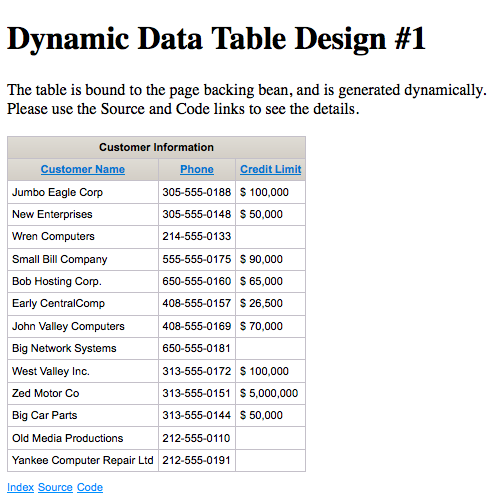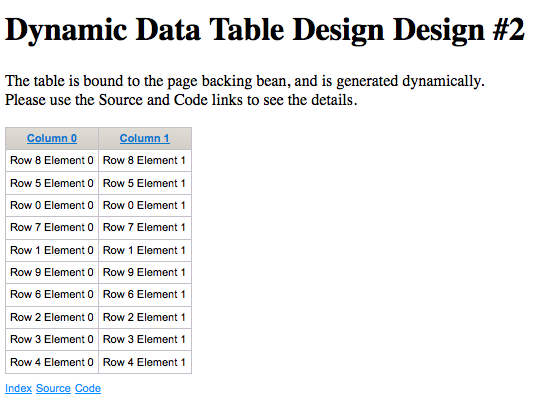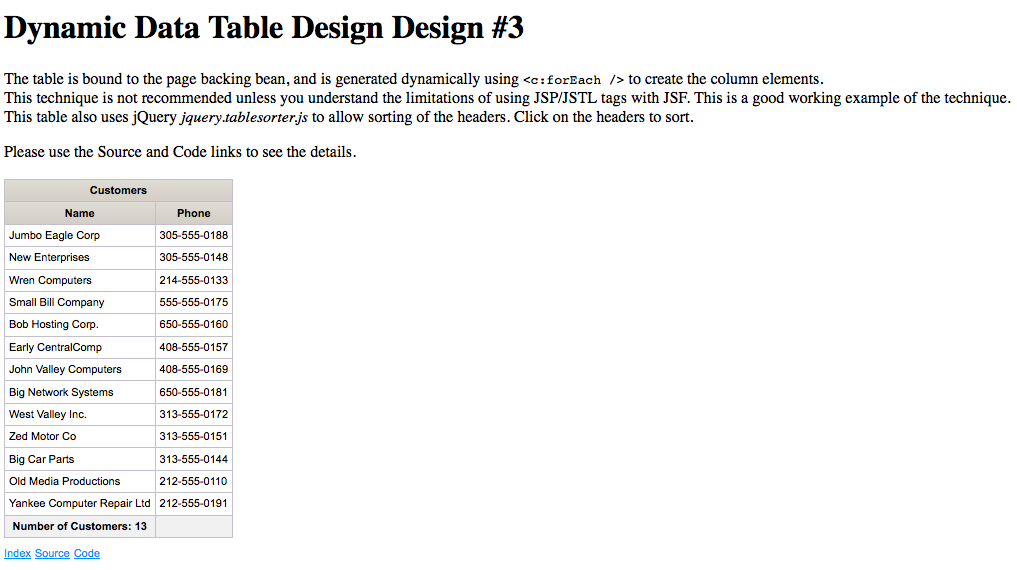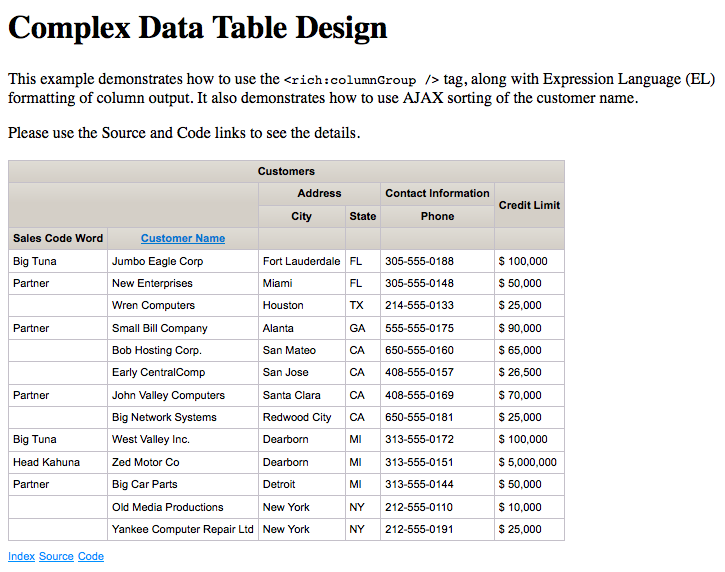Introduction
I have been working on JSF tables for the various projects I have been involved with over the years. Starting in 2012, I began looking at RichFaces <rich:dataTable /> for some projects at my day job. The research into how to handle a number of complex situations has been enlightening to say the least.The table is the most complex component in HTML. It is seemingly boundless in its extensibility. You can have multi-column headers that span multiple rows, you can multi-row cells, or multi-column cells. Tables can be displayed left-to-right, or right-to-left, top-to-bottom and vice-versa. As a result, when developing components for JSF, or any component framework, decisions must be made on how to generate them.
A couple of the component frameworks like PrimeFaces, and RichFaces allow developers to create more complex tables with more ease. However there are limitations with each of these frameworks. We trade flexibility for consistency, and this is fine in most cases.
The demonstration code in this post is about getting some of the flexibility back, or taking advantage of the flexibility that comes with a framework like RichFaces. We will gain the flexibility back, but it is a function of complexity. The examples will show you techniques for doing the "same thing" in multiple ways. For example, sorting can be done on the server, client, or a combination of both.
The question is where we put the complex bits. The answer to that question depends on you as a developer. You need to examine the problem domain, and understand the limits to the techniques presented.
Solutions
Please let me confess something. I like building HTML objects programmatically. There I said it. In this case I am trading the ease of development for flexibility. The solutions below will demonstrate the different techniques for accomplishing the same functionality. Please examine the code carefully before discounting it. I spent a lot of time playing with it to make it look simple.The code for this project was developed using NetBeans and Apache Maven. The code was tested on GlassFish 3.1.2.2 and 4.0. It should work on other application servers, but I have not tested it on other servers. This project assumes you are using NetBeans which includes a sample database that these examples require. If you are not using NetBeans, you will need to create your own database with sample data to display some of the tables.
The code can be downloaded from Bitbucket at the link below, or in the references section at the end of the post.
richfaces-tables-poc
Dynamic Data Table with Sorting
 |
| Dynamic Table with Sorting |
@ManagedBean. The bean is responsible for generating the table programmatically, and returning it back to the page. The data is sortable by column.As you can see the page is very simple. In fact, most of the page is plumbing and navigation. The <rich:dataTable /> is the smallest part of the page. The code to generate the table is much more complex.
As you can see we have traded simplicity in the page for complexity in the
@ManagedBean. If you are satisfied with this technique, lets take a look at another one.
Dynamic Data Table with Sorting Revisited
 |
| Dynamic Table |
The more simplified code in the
@ManagedBean is shown below.
The code above was written before I added more functionality to my jsf-utils project. The new methods would shorten this considerably, but it would still be fairly complex.
Dynamic Table using JSP/JSTL Tags with JSF
 |
| JSF/JSTL Dynamic Table |
In this example, I will generate the rows and columns using
<c:forEach />. This transfers a lot of the complexity to the page and away from the @ManagedBean. Since we are using <c:forEach />, our mechanism for sorting has to change. I used Query jquery.tablesorter.js to allow sorting of the headers.
As you can see we have much simpler code in the page bean. It looks like what you would expect for a normal JSF data table.
Complex Data Table Design
 |
| Complex Table Design |




